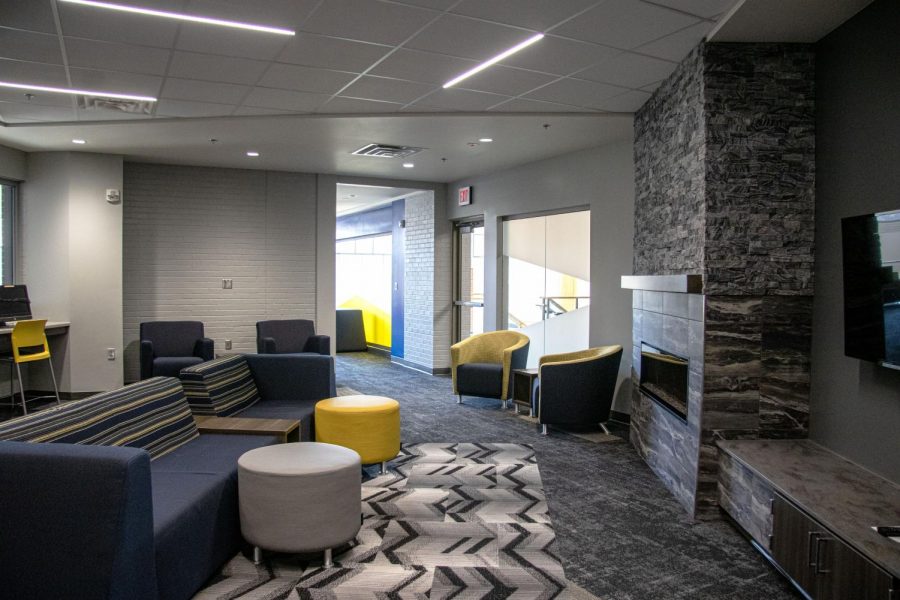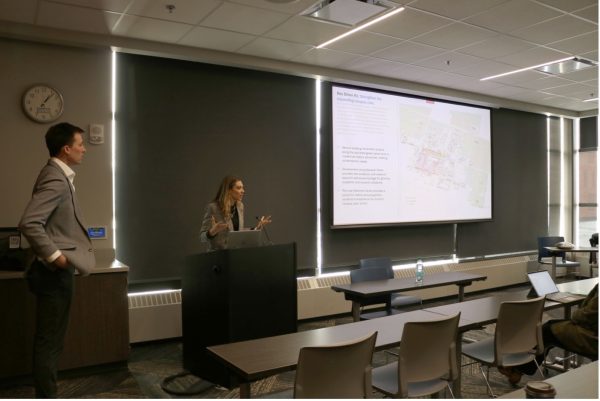Multicultural Center relocates to top level in Student Union
This week, faculty in the Multicultural Center began their move to the new location in the upstairs of the Union.
October 18, 2019
From downstairs to upstairs, the Multicultural Center has relocated in the Student Union at South Dakota State University.
The Student Union renovation plan consists of three phases. Phase one is the relocation of the Multicultural Center to the upper level of the Union.
The new $1.5 million Multicultural Center will open later this month on the upper level of the Student Union with hopes of increasing awareness and foot traffic throughout the facility.
There will be a soft opening for students and staff to move in, followed by a grand opening toward the end of October, time and date are yet to be determined.
The multicultural center houses the offices of Disability Services, Multicultural Affairs and National Student Exchange.
Student organizations such as the Black Student Alliance, the Latin American Association, and the Gender and Sexuality Alliance also call the multicultural center home. The Multicultural Center offers a variety of resources to students including tutoring, advising, computer resources, free printing services and social and academic support.
“We have documents dating way back to September 2014 with focus groups and surveys,” said Kendra Eichten, secretary for the Multicultural Center about the project planning.
Eichten explained that key faculty and students started the project with focus groups and surveys to see if this project was something students and faculty wanted. After a positive response, they brought in an architect to see if the idea could become a reality and to create mock floor plans.
For the last few years, students, faculty and staff have advocated for the relocation to become part of the Student Union renovation and landed its spot in the first phase.
The progress started to show in August when construction started in the upper level of the Student Union.
“We had to wait to start the relocation construction until after [student] orientation was done for the summer since the Union is where orientation is located,” said Florencio Aranda, known as Dr. Flo to students, is the Latino/a/x retention adviser at SDSU
He works to plan events, programs and workshops that focus on SDSU’s Latino cultural contribution to the student body.
Aranda and the other staff of the Multicultural Center helped design the new Multicultural Center. They worked to get the student’s voices heard, and to make sure the space is representative of the students who use the space.
“The reward for me was getting the students’ input on what they wanted to see,” Aranda said. “The students’ opinions and ideas were very important for me to advocate.”
Students and staff members advocated for a space where they were going to be visible and their presence would be known and felt by the rest of the students and faculty at SDSU.
“I think it is going to increase foot traffic and awareness. It is going to help recruitment for all minority students in different clubs and organizations and at SDSU,” said Akeah Aschmeller, President of the Black Student Alliance. “I hope we can raise recruitment up.”
Aschmeller also wants there to be more awareness of the center and the resources offered. The Multicultural Center tends to get lost in the lower level and students do not know what is available to them, so being upstairs is going to increase awareness said Aschmeller.
As of 2018, the minority students make up 16.4 % of SDSU’s student body, which is about 1,986 students.
Naomi Wynn, a current student and member of the Black Student Alliance, said she uses the space to study, take a break in between classes and hang out and talk to others.
“This is a safe space,” Wynn said. “If you don’t want to go home or back to your dorm room for some reason, you can come here. Especially multicultural students who might not be close to their families. I consider this place my second home and family. The staff and faculty are always here for me.”
The one thing Aranda wants the rest of SDSU student body to know about the Multicultural Center is that it welcomes all students.
“It is an inclusive space for everyone regardless of race, background, identity, belief and lifestyle,” Aranda said. “It is designed to be a space where everyone can coexist and learn and grow from one another.”






















